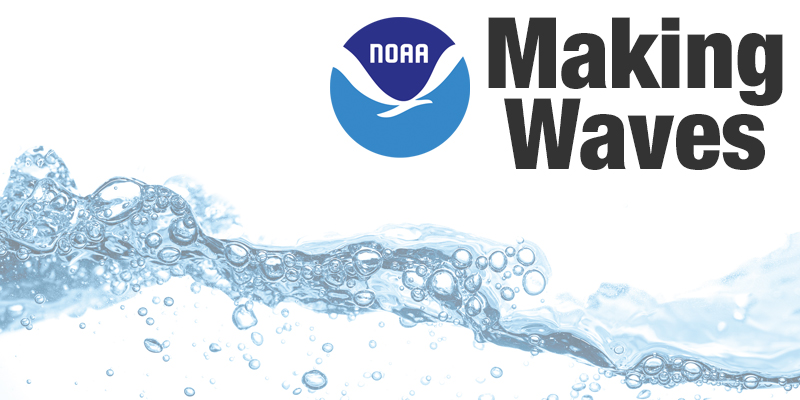Charting New Waters
Making Waves: Episode 136
Boaters rely on NOAA's nautical charts for depth measurements so they don't accidentally ground on sandbars or other underwater obstructions. See how NOAA updates nautical charts with high tech tools—including new experimental ocean "robots" that are small enough to survey the nation's shallowest coastal areas.
Take three minutes out of your day to hear Captain Shepard Smith of the NOAA Ship Thomas Jefferson discuss how nautical charts are updated—and how NOAA is using promising new technology that will add shallow depths to nautical charts. | Download
Transcript
I'm the Captain of the NOAA Ship Thomas Jefferson. The Thomas Jefferson is a hydrographic survey ship. We map the ocean floor in order to update the charts. All boats on the water—from the smallest to the largest—use the nautical charts that NOAA makes to safely navigate. They know how deep the water is, where the obstructions are, and if there's anything dangerous out there.
We're making really good progress but still about half of the U.S. coasts were last surveyed with pre-World War II technology of lead line and sextants. Most of the surveys that we are replacing were done about 50 years ago. So this ship does mapping of the seafloor with sonar.
So we bounce sound off the seafloor and it comes back, and we measure the time that it takes to travel, and we can measure the depth of the water. We have very sophisticated instruments that do this at a very high resolution, so we can see everything down to the little sand ripples and shipwrecks and everything that are on the seafloor. Those measurements get pulled together into a very high-resolution model of the seafloor, so you can visualize it like you could fly through it like a video game. And eventually all of those measurements are databased and put together and made public, but also used to update the nautical charts for safety and navigation. It's the map of the ocean for a ships and boats just like you might have a map for your car.
The coasts are very dynamic. They change as a result of storms and currents, sea level rise to some extent, and also human activity. So we do a lot of shipwreck mapping, marine debris that washes from the shore into the waterways after a storm. One of the most interesting and biggest challenges we have right now is working our way into the really shallowest part of the coasts. The shallows are the most important for habitat—that's where all the juveniles and essential fish habitat are—it's also the most dynamic. That's where a lot of the energy is from waves and currents. It's the area that changes the most. It's also the hardest to measure because it's difficult and dangerous to work in really shallow water and because our sonars work better in deeper water. We can map a really big area in deep water. But when you start getting into the depths that really matter to smaller boats, say 12 feet or less, it takes an enormous amount of time.
We've just introduced into the NOAA fleet the first unmanned survey vessels which can be operated remotely or can operate autonomously to survey the areas where it's too shallow or too unsafe for our manned boats to go. They locate themselves by GPS. They have an echosounder on board, just like the big ships do. They have a computer on board to log all that information, to record it all. And they communicate using 4G technology to communicate that information ashore to the operator and to receive new mission taskings from us.
Really they can do two things. First, they can get places that we cannot get today. We can map places we can't with other technology. And that's really important, particularly in our coastal areas that support all of the smaller harbors and waterways that thousands of coastal towns depend on. But second, unmanned systems can potentially in the future allow us to put more boats on the water, to be able to do surveys more quickly and potentially cheaper. But we're not there yet. There's a lot of automation that needs to be developed to support that type of technology. But what's really exciting to me is that those same automation techniques that are necessary for unmanned systems also really improve manned systems. Through the automation driven by unmanned systems, all of our work gets to be more efficient and higher quality.

From corals to coastal science, catch the current of the ocean with our audio and video podcast, Making Waves.
Subscribe to Feed | Subscribe in iTunes